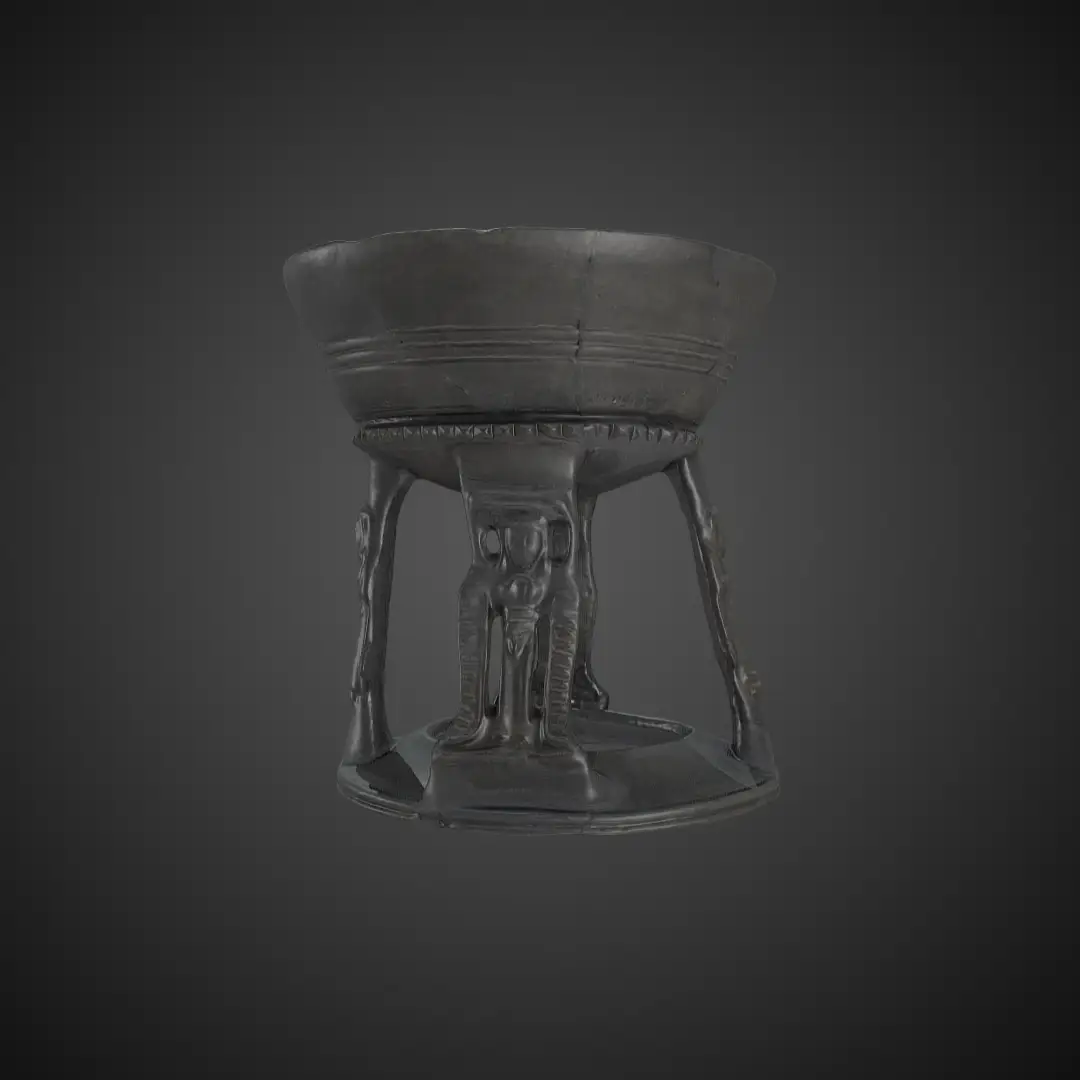The caryatid chalice, whose find spot is unknown, was made of Etruscan bucchero and is dated between 620/10 and 570/60 BC. The vessel is composed of an annular foot with four female, figurative stakes, the carytides, which support a bowl. The inside of the vessel shows a little hump, the so-called omphalos hence it was used for cultic purposes. In alternating order the caryatides are naked with raised arms and wings reaching to the ground and vested with wings hanging down sideways and touching their braids. The area above the head of the vested caryatids can possibly be interpreted as a polos, the gods crown. Caryatids are commonly known as architectural supports, e. g. from the Erechtheion on the Athenian Acropolis. The role models for this type of vessel are can be found in the syrian-phoenician area.
Hardware Nikon D 750, Nikon 40 mm macro, Software Agisoft Metashape, Blender, ZBrush, Substance Designer




Reviews
Clear filtersThere are no reviews yet.